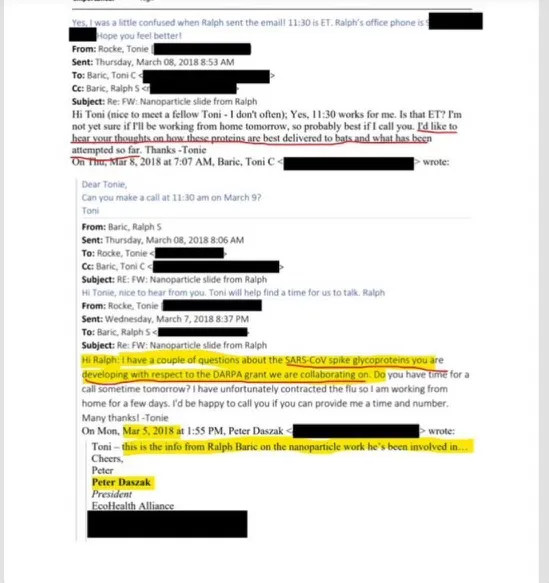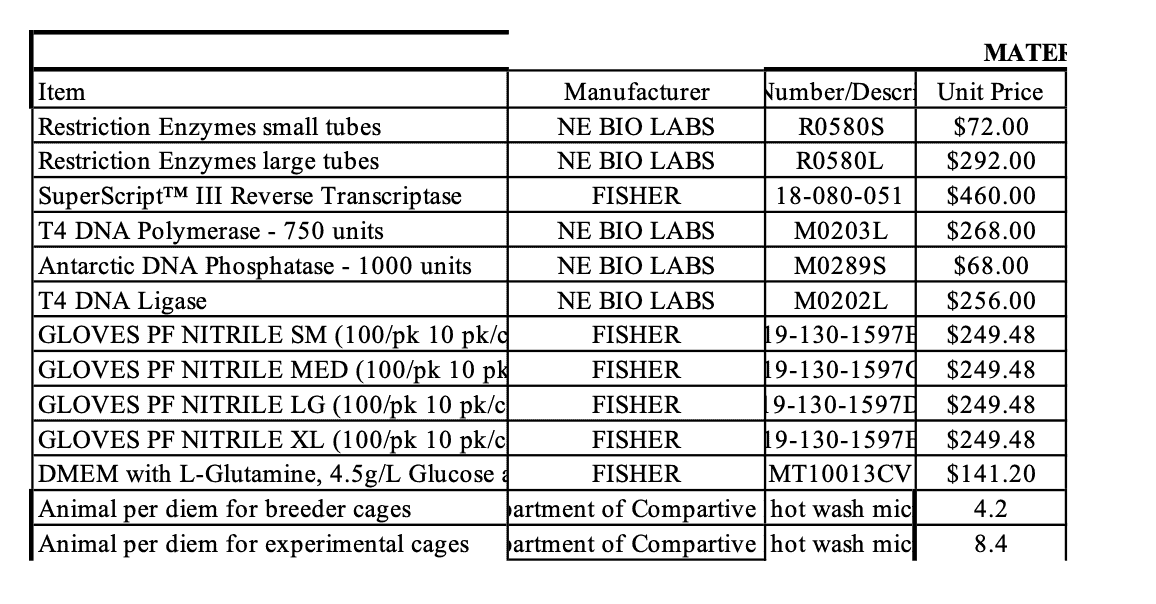by John Leake, Courageous Discourse:

The recent news that Dr. Peter Daszak has been “invited” to a May 1 House of Representatives hearing to question him about his 2018 work on SARS coronaviruses prompted me to review the following email thread dated March 5 – 8, 2018 between Daszak at EcoHealth Alliance, Tonie Rocke at the United States Geological Survey to UNC Professor Ralph Baric.
TRUTH LIVES on at https://sgtreport.tv/

Especially interesting is Ms. Rocke’s statement: “Hi Ralph: I have a couple of questions about the SARS-CoV spike glycoproteins you are developing with respect to the DARPA grant we are collaborating on.”
Here it is critically important to understand that DARPA chose to pass on Daszak’s DEFUSE grant proposal—which proposed modifying SARS-CoV bat coronaviruses in order to make them infectious to humans—because, in the DARPA reviewer’s estimate, the work proposed was too dangerous.
And yet, as Ms. Rocke plainly states, Professor Baric was already “developing SARS-CoV spike glycoproteins with respect to the DARPA grant.”
This is just one of many glaringly obvious pieces of evidence that Baric, Daszak, and Dr. Shi Zhengli at the Wuhan Institute of Virology were already, in 2018, developing SARS-CoV-2—the infectious agent that began circulating in Wuhan, China less than two years later.
The 2018 DEFUSE proposal also expressly states the plan to insert a furin cleavage site into the “SARS-CoV spike glycoprotein” that Professor Baric was “developing” in 2018.
As I wrote in an earlier post, the U.S. Right to Know reporter, Emily Kopp, wrote an excellent report titled US scientists proposed to make viruses with unique features of SARS-CoV-2 in Wuhan and published on January 18, 2024. As Ms. Kopp points out, SARS-CoV-2 has multiple features that are expressly proposed in the DEFUSE grant proposal.
An early draft of the DEFUSE proposal — obtained by FOIA release to US Right to Know in Dec. 2023—states the following:
We will identify the best consensus candidate and synthesize the genome using commercial vendors (e.g., BioBasic, etc.), as six contiguous cDNA pieces linked by unique restriction endonuclease sites that do not disturb the coding sequence, but allow for full length genome assembly,” the grant states.
This was PRECISELY the feature of SAR-CoV-2 that Valentin Bruttel et al. found so suspicious in their 2022 paper titled Endonuclease fingerprint indicates a synthetic origin of SARS-CoV-2. As they summarize for the lay reader:
Lay Summary To construct synthetic variants of natural coronaviruses in the lab, researchers often use a method called in vitro genome assembly. This method utilizes special enzymes called restriction enzymes to generate DNA building blocks that then can be “stitched” together in the correct order of the viral genome. To make a virus in the lab, researchers usually engineer the viral genome to add and remove stitching sites, called restriction sites. The ways researchers modify these sites can serve as fingerprints of in vitro genome assembly.
On a darkly comical note, the authors of the 2022 paper describe their materials for analyzing the SARS-CoV-2 restriction sites:
The R package DECIPHER (Wright, n.d.) was used to analyze restriction maps. DECIPHER comes with a set of 214 restriction enzymes for sale at New England Biolabs (referred to as NEB restriction enzymes).
Compare this 2022 analysis of SARS-CoV-2 with the DEFUSE grant proposal of 2018, which includes the following budget table submitted by USGS researcher Tonie Rocke (who exchanged the March 5, 2018 e-mail with Ralph Baric).

In other words, Baric et al. proposed to use the exact same materials and methods in their viral engineering work in 2018 that was used to analyze SARS-CoV-2, which began circulating in Wuhan less than two years later.
For various reasons, I suspect that Baric et al. had already engineered SARS-CoV-2—or had already made a great deal of progress in doing so—before 2018. The DEFUSE grant was merely a mechanism for hauling a ton of dough out of DARPA for work they had already done—that it, the grant proposal was merely a money grab.
Read More @ petermcculloughmd.substack.com



